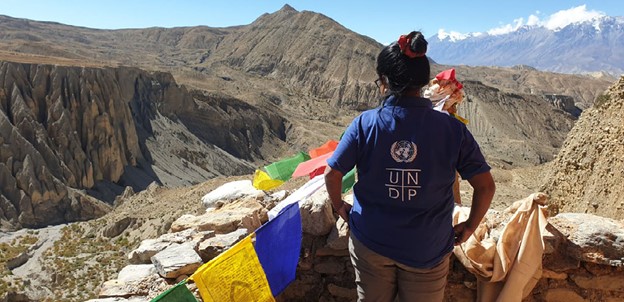Letter from Kathmandu
August 9, 2022

If you’ve ever been struck – I mean really struck, overwhelmed and helplessly awed – by something you see, you’ll know how I felt that day I first set foot in Mustang.
A vast, remote region high in north-western Nepal where the air is thin and populations sparse, the name comes from Tibetan words with two meanings: according to some “Plains of Aspiration” and for others, “Plains of medicines”.
It was easy to understand why, I thought, for before me lay the grandest stretch of mountains you can imagine – the Annapurna range. Mount Dhaulagiri dominated the view as it towered above the clouds that formed little more than a band of pleasing fluff around its midriff, its craggy, pristine snow-covered slopes like something you’d see in those oversized, glossy coffee table books full of photos of places you’re unlikely to ever see for real. Or of places you did once see and now wonder if they were really like that. But Dhaulagiri, Nilgiri and their companions were real and I was among them. I stood silent, motionless.
Red, blue, green and white prayer flags flapped busily above the houses in the hamlet nestled in the valley below. A dozen sheep ambled past the village. Puffs of dust rose, then dissipated in their wake. There were patches of green where potato and buckwheat grew, while pilgrims took a meritorious dip in the chill of the holy river. Remote it may be and infinitely removed from 21st century sophistication, but this place, like me, was truly alive.
Near the northern border in a village called Dhuk, I met Dolkar. Dolkar had never left the village, nor gone to school. Her husband Chimé spent much of the year away from home, grazing his herd of goats and sheep along the upper Mustang region where the rains seem to come late every year, forcing him to go further and further afield to find good pasture land.
“After all these years, work is underway by the government to give our village piped water and electricity,” she told me. “Jobs other than nomadic farming and retail trade across borders, are rare here, and for women, life can be hard especially during the harsh winter months.”
As you travel this frontier of villages along Nepal’s northern reaches, the stories are similar - harsh winters, breathtaking landscapes and resilient people who have learnt to adapt and survive against odds stacked against them. Sadly, the odds are rising once again because of climate change.
The Kali Gandaki river that meanders through this valley is fed by Himalayan meltwaters, as are all major river systems of South Asia, dating back to a geological era before memory, time and the Anthropocene.
Melting glaciers and alpine lakes have birthed these rivers that fan out across the landscape till they meet the sea, sustaining two billion people along the way. In the span of the past century rising global temperatures have subverted the balance that is as old as these mountains, causing glaciers to melt faster and glacial lakes dammed by debris to burst in the high Himalayas. These glacial lake outburst floods or GLOFs that result have been known to obliterate entire villages, sometimes even mega infra-structure in a matter of minutes.
Add to that the erratic rainfall and droughts, which cause avalanches, flash floods and landslides and displacements of human settlements – all linked to climate change. The annual cost to Nepal of natural disasters, most of which are climate-induced, is staggeringly high, and the cost to families like Dolkar’s spans across generations.
The people who live in these villages play no part in accelerating human contributions to climate change, yet they are paying the price. The costs and the solution are well beyond their and their country’s ability to manage. Nepal’s coping capacity is painfully low, more so given a young mountains geology (steep slopes and high peaks), difficult terrain, limited economic opportunities and low- or no-risk-informed development practices. It’s no exaggeration to say that communities that depend on Himalayan waters face an existential risk.
Nepal’s President, Bidya Devi Bhandari, has urged UNDP to work closely with the people, women mostly, and Government of Nepal to address the climate crisis. We have some of the best practices in high-altitude climate change adaptation that we can look to, replicate and expand. For instance, in the Everest region, UNDP with GEF support, has worked with the government of Nepal to successfully lower water levels at the Imja Lake to safer levels. And early warning systems in the Imja, Tsho Rolpa and other river basins now enable community leaders to be alerted when a GLOF event is looming.
As I recall the people in the village going about their work, I think once more of the need to protect and promote their livelihoods as well as to lower the levels of local lakes. That was what I am here for. And it was what UNDP is here for.
Then, with that thought in my mind, I moved to the first of the steps hewn years before into solid rock and made my way toward Kathmandu.


 Locations
Locations